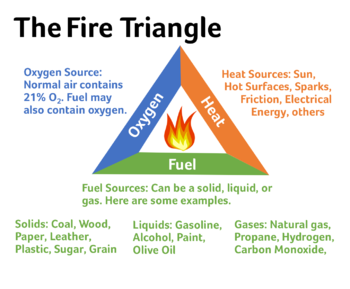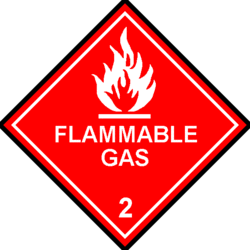Salting out isopropyl alcohol
This guide is provided for informational and educational purposes only. We do not encourage you to break the law and cannot claim any responsibility for your actions. |
Salting out isopropyl alcohol increases the potency of the alcohol by using salt to draw the water out of the alcohol. The salt dissolves in the water, but is insoluble in isopropyl alcohol, making the water heavier and separate to the bottom while the isopropyl alcohol floats on the top.
Risks and hazards
Be incredibly careful when working with isopropyl alcohol or any other flammable substances. High temperatures, sparks, or open flames can cause fires or explosions since isopropyl alcohol emits flammable vapors! Breathing isopropyl alcohol vapors is dangerous and these experiments should be done in a well-ventilated area with proper protective equipment.
In order for an explosive event to occur, there needs to be an ignition source or spark. This spark can come from to-be-expected items such as a lighter or overhead light on a stove, but sparks can also occur in less obvious ways, such as static electricity, certain materials grinding against each other, and electric components found on or in stoves or car components.[1] Electric sparks can be created simply by wearing clothes - the common "shock" one experiences after shuffling around with socks on and touching a metal object, along with the sparks created by the compressors in most common kitchen freezers, is sufficient to cause an explosive event.
The flammability of a gas depends on its concentration in the given atmosphere. If the concentration of isopropyl alcohol falls in this range and there is a spark present, there will be an ignition and an explosive event.[2]
Materials
- Isopropyl alcohol - the vapors resulting from this liquid are highly flammable.
- Non-iodized salt. The salt must not contain iodine. While iodine is soluble in isopropyl alcohol, sodium chloride is not. Additionally, iodine is not very soluble in water. This threatens the purity of the end product.
- Siphon (oral or needle-type syringe, turkey baster, pipette)
- Large, resealable glass jar
Optional
Baking dish, or cookie sheet Epsom salt (no fragrance)
Steps
Note: It is recommended to read all of the procedure before starting it.
Step 1: Add salt to the jar
Salt is poured into the jar until it is about a quarter of the way full.
Step 2: Add the isopropyl alcohol
Isopropyl alcohol is slowly poured into the jar until the jar is filled to the 3/4 mark and then sealed.
Step 3: Mixing
The jar is shaken thoroughly for at least 5 minutes.
Step 4: Let it settle
The jar is then placed down and left undisturbed for approximately a half hour to let the alcohol and salt water separate.
Step 5: Siphon off the isopropyl alcohol
The jar is opened and the clear liquid at the top is the purified isopropyl alcohol. It is siphoned off and placed in an airtight container for storage. No salt should be siphoned and a thin layer of isopropyl alcohol should be left in the jar to avoid any salt being drawn up. Be sure to perform this step in a well-ventilated area to minimize the risks of explosions due to the build-up of isopropyl alcohol vapors.
Step 6: Throw away the salt water
The salt water can be disposed of; it is no longer useful. The remaining isopropyl alcohol in the jar is to be discarded as well. The purified isopropyl alcohol can be stored in a clean, dry container with a marked expiration date and label.
Optional
This optional step is concerned only with the removal of more water. The purified isopropanol obtained in this manner is good for most applications. However, it is important to note that it is far from anhydrous and small amounts of salt may (read: 'will') remain. The percentage of remaining water is greatly dependent on the environment's temperature (as is the remaining salt) The warmer it is in your 'lab', the more water that will remain. The same goes for the salt. NaCl (salt) is sparingly soluble in isopropanol. As long as the temperature in your lab is average room temperature, not exceedingly warm, the amount of remaining salt is most likely negligible and ineffectual for most applications, such as simple extractions.
Warning: If the isopropanol is to be used in a reaction that involves a strong acid in a high concentration, it could be enough to cause problems. At best, it could ruin the reaction. At worst, it could cause the release of noxious fumes. If a strong acid (H₂SO₄, HCl) is to be mixed directly with the isopropanol, you would be best off buying anhydrous isopropanol from a lab/chemical supply company or purifying the isopropanol through distillation. Depending on the country in which you live, this product can be bought on popular shopping websites (such as Amazon) and it is not too costly. In other words, just buy lab-quality isopropanol for such reactions. No matter the cost, your well-being is more valuable. |
Epsom salt is magnesium sulfate heptahydrate or MgSO₄ + 7H₂O. We need to remove the H₂O from this compound. Once removed, it will become a wonderful desiccant. A desiccant is a chemical that is hydrophilic. In other words, it 'loves' water (the word hydrophilic literally means 'water lover') and will take a good portion of the remaining water in the isopropanol.
Optional Step 1: Prepare the Materials
Place an amount of Epsom salt on a baking sheet. Place only enough that it forms a thin layer. It doesn't need to be crazy-thin. A quarter of an inch (about half a centimeter) is just fine. Measurements do not need to be exact. Just keep in mind, the deeper the pile, the longer this will take.
Optional Step 2: Bake the Epsom salt
Place the dish/pan in an oven that has been preheated to aprox 375° F (200° C). Again, like the quantity of salt, the temperature doesn't need to be exact. You want it hot enough that the water will come out of the salt. Let the MgSO₄ + 7H₂O bake for an hour, stirring occasionally with a spatula or wooden spoon. If it is a cold day,or you live in a cold climate (or you don't mind the heat), the process can be sped up by leaving the oven door open a bit. Use gloves/pot holders! You will see the appearance of the MgSO₄ + 7H₂O change from somewhat clear crystals to white flakes/powder. When it has all changed to look like white powder, you are done. You have made pure MgSO₄! Allow the product to cool enough that it can be safely handled. Store in an airtight container. Choose a container that leaves as little room between the top of the MgSO₄ and the lid as possible, as the MgSO₄ will happily absorb moisture from the air.
Optional Step 3: Treat the Isopropanol
Pour a quantity of your newly dried MgSO₄ in a jar with you prepared isopropanol. (make sure the MgSO₄ has cooled to room temperature!) Swirl it around for a bit (do not shake) until the MgSO₄ appears to swell. It is absorbing water. Once this happens, pour it through a coffee filter, discard the wet MgSO₄, and repeat until the MgSO₄ no longer swells or looks like it is absorbing water. This isn't an exact science and you'll see how it looks when you do it. You'll be able to get a good idea of when no more water can be removed from the isopropanol in this way.
Keep in mind, the isopropanol is still far from anhydrous. To remove any more water would require the use of molecular sieves which can be bought on Amazon, ebay, science supply websites, etc. and aren't very expensive.
If you are able to buy isopropanol that is 99%, skip straight to using molecular sieves. You cannot salt out the remaining 1% of water using the above method.
References
- ↑ "Fire Protection and Prevention", OSHA https://www.osha.gov/dte/grant_materials/fy09/sh-18796-09/fireprotection.pdf
- ↑ Flammability of Gasses http://people.clarkson.edu/~wwilcox/Design/flamlim2.pdf

